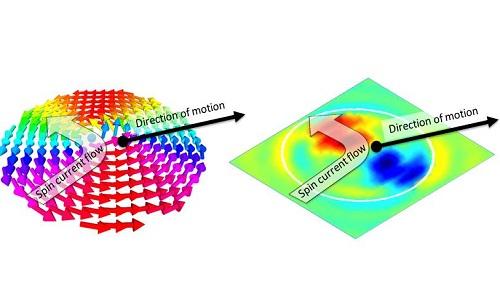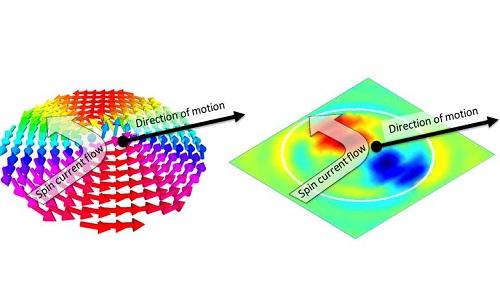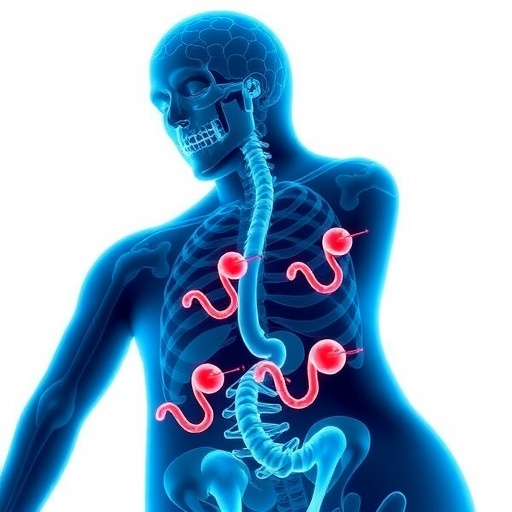
Credit: Reproduced with permission of 2016 American Physical Society
Swirling objects known as magnetic vortices and skyrmions can be miniaturized without sacrificing mobility, a KAUST-led international research team has found. These findings are relevant for future "race-track" memory technologies that feature massive densities of moveable magnetic bits1.
In nanometer-thin magnetic films, such as iron-nickel alloys, the region separating two magnetic domains or defects can adopt tiny whirlpool-like patterns. Some of these patterns, called skyrmions, resist unraveling even when packed tightly together, and they can also be directed with small electric currents. These features have made the skyrmions attractive targets for research into high-capacity memory devices. One concept zips skyrmions around a loop then past a stationary read/write head to eliminate the need for mechanical components used in today's hard drives.
Aurelien Manchon, an Associate Professor of Material Science and Engineering at the University, notes that one of the main reasons for the appeal of skyrmions is their ability to avoid defects or uneven patches in thin films that would normally trap or "pin" a magnetic charge. However, this agility is compromised when researchers try to shrink skyrmions to the smallest size possible–the smaller they get the more likely they are to get pinned because of the relative increase in defect site dimensions.
To improve these devices, Manchon and international collaborators tried to understand the fundamental momentum transfer between charge currents and magnetic whirlpools.
Using intense x-rays generated at Berkeley University's Advanced Light Source, the team captured time-resolved images of whirlpool patterns called magnetic vortices as they gyrated along a nanometer-wide half-ring track. By pinpointing the position of the vortex core from the imaging sequence, they obtained accurate data about a parameter, known as the non-adiabatic spin-transfer torque, which is crucial for electrical manipulations.
Surprisingly, the measured non-adiabatic torque was far greater than values predicted by existing models. To account for this discrepancy, a theoretical analysis by Manchon showed the extra twisting was provided by another force–the emergent Hall effect, which occurs when electrons travel through a magnetic whirlpool.
"In a nutshell, electrons experience a force that pushes them sideways, but it doesn't come from the local magnetization itself; instead it arises from the topology of the magnetic texture," explained Manchon. "This effect produces an extra spin-polarized current that exerts a torque on the whirlpool."
The researchers found that the additional non-adiabatic torque intensifies when the size of the whirlpool is reduced–a driving force that may offer a way to overcome defect pinning at the nanoscale. "This might be an interesting compromise to seek, especially in the context of skyrmion-based data storage," added Manchon.
###
Media Contact
Michelle D'Antoni
[email protected]
http://kaust.edu.sa/
############
Story Source: Materials provided by Scienmag





